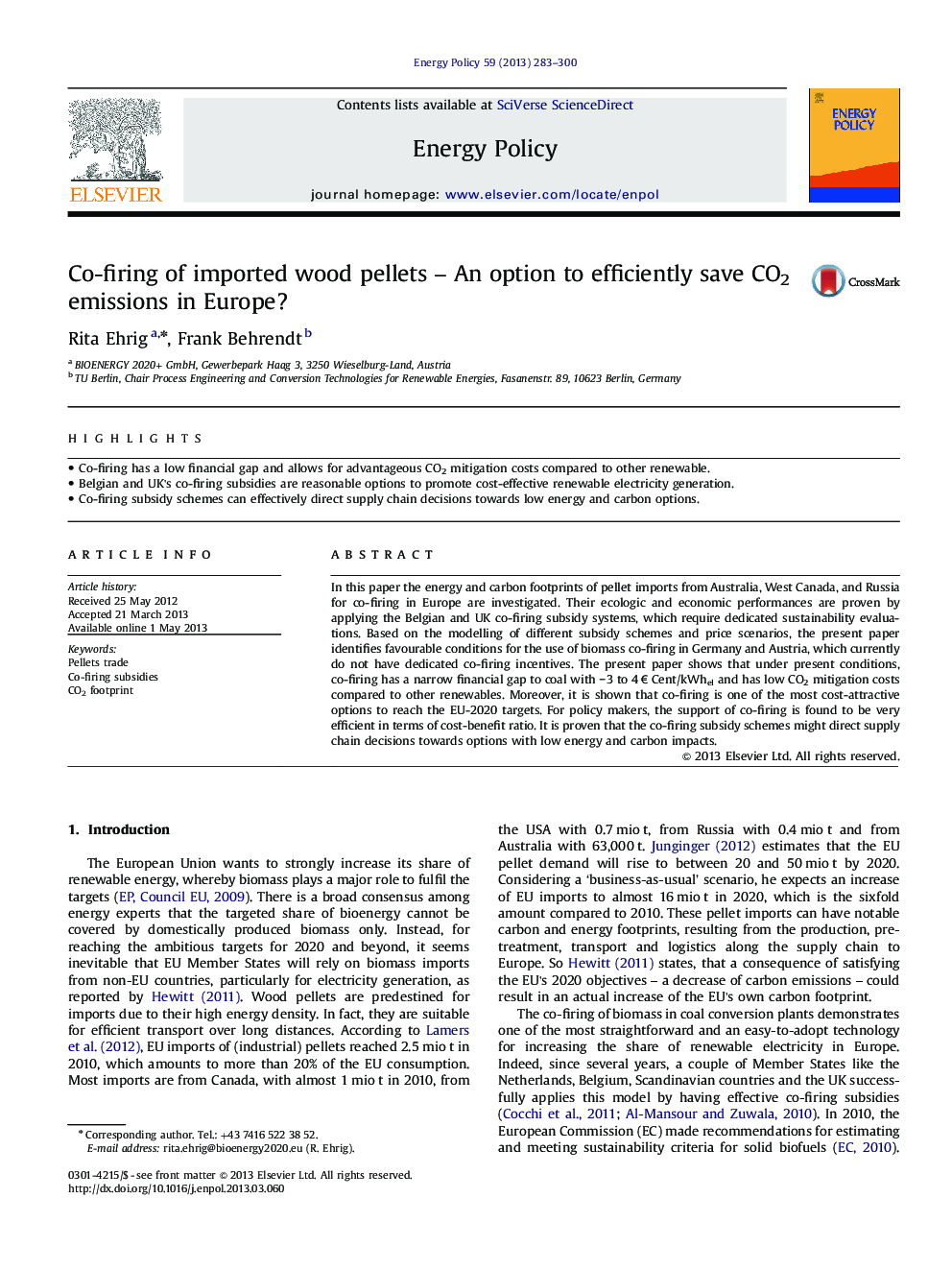| Article ID | Journal | Published Year | Pages | File Type |
|---|---|---|---|---|
| 7404318 | Energy Policy | 2013 | 18 Pages |
Abstract
In this paper the energy and carbon footprints of pellet imports from Australia, West Canada, and Russia for co-firing in Europe are investigated. Their ecologic and economic performances are proven by applying the Belgian and UK co-firing subsidy systems, which require dedicated sustainability evaluations. Based on the modelling of different subsidy schemes and price scenarios, the present paper identifies favourable conditions for the use of biomass co-firing in Germany and Austria, which currently do not have dedicated co-firing incentives. The present paper shows that under present conditions, co-firing has a narrow financial gap to coal with â3 to 4 ⬠Cent/kWhel and has low CO2 mitigation costs compared to other renewables. Moreover, it is shown that co-firing is one of the most cost-attractive options to reach the EU-2020 targets. For policy makers, the support of co-firing is found to be very efficient in terms of cost-benefit ratio. It is proven that the co-firing subsidy schemes might direct supply chain decisions towards options with low energy and carbon impacts.
Keywords
Related Topics
Physical Sciences and Engineering
Energy
Energy Engineering and Power Technology
Authors
Rita Ehrig, Frank Behrendt,
